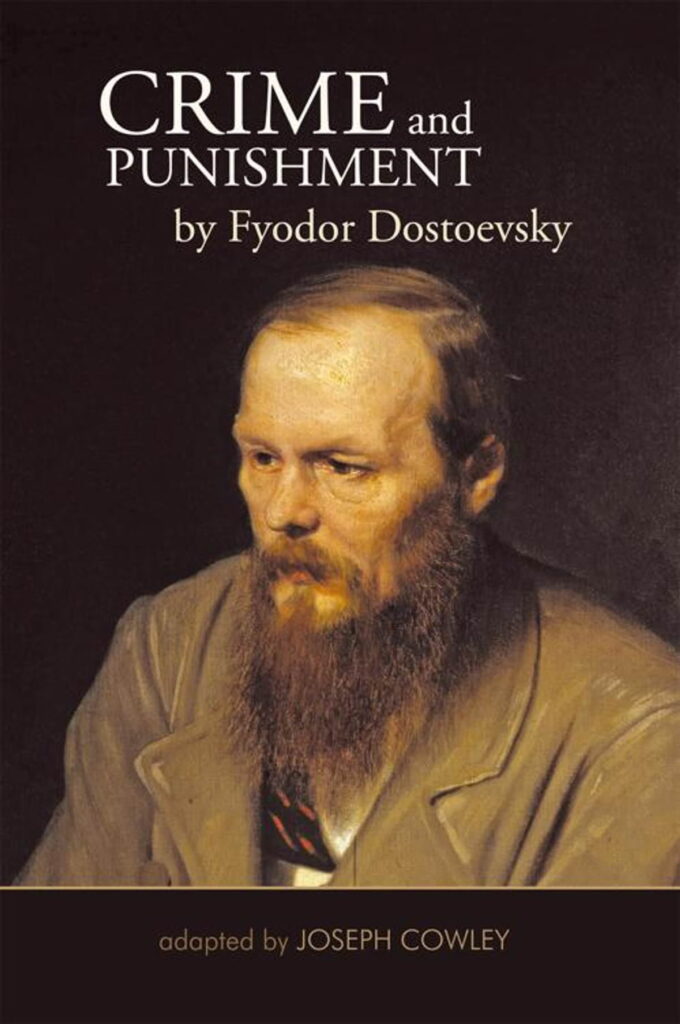Fyodor Dostoevsky’s Crime and Punishment is a towering masterpiece that delves deep into the human psyche, exploring themes of guilt, morality, and redemption. First published in 1866, this psychological fiction and philosophical novel has secured its place as one of the most important works in world literature. In this review, we will examine what makes Crime and Punishment an enduring classic, and why it continues to resonate with readers more than a century after its publication.
Plot Overview
The novel follows the story of Rodion Raskolnikov, a young law student living in the impoverished quarters of 19th-century St. Petersburg. Faced with dire financial straits, Raskolnikov conceives a theory that certain extraordinary individuals possess the right to commit crimes if it serves a higher purpose. To test his hypothesis, he murders a pawnbroker and her sister, an act that sets off a chain of events that lead Raskolnikov into a spiral of guilt, paranoia, and existential despair.
Dostoevsky’s narrative takes us into the inner workings of Raskolnikov’s mind, capturing his internal conflict as he wrestles with the consequences of his crime. The novel’s psychological depth is its defining feature, offering readers an intimate look at the turmoil that accompanies a guilty conscience.
Themes and Analysis
One of the most compelling aspects of Crime and Punishment is its exploration of moral dilemmas. Raskolnikov’s theory of the “extraordinary man” raises complex ethical questions: Is it ever justifiable to commit a crime for a perceived greater good? Can moral transgressions be outweighed by noble intentions? Dostoevsky doesn’t provide straightforward answers, but instead invites readers to grapple with these issues alongside his protagonist.
The novel’s exploration of guilt and redemption is equally powerful. As Raskolnikov’s mental state deteriorates, the reader is drawn into his world of fear, anxiety, and remorse. His eventual confession and search for redemption are depicted as both a moral and spiritual journey, reflecting Dostoevsky’s own deeply held religious beliefs.
Another significant aspect of the novel is its portrayal of 19th-century Russian society. Dostoevsky paints a vivid picture of life in St. Petersburg, capturing the harsh realities of poverty, inequality, and the social stratification that characterized the era. The city itself becomes a character in the novel, with its grimy streets and crowded tenements serving as the backdrop for Raskolnikov’s existential crisis.
Character Development
Raskolnikov is one of the most complex characters in literature, and Dostoevsky’s portrayal of his psychological state is nothing short of brilliant. Throughout the novel, Raskolnikov is torn between his belief in his own intellectual superiority and his deep-seated moral doubts. His interactions with other characters—such as his devoted sister Dunya, the enigmatic Svidrigailov, and the compassionate Sonia—further illuminate the contradictions within him.
The supporting characters in Crime and Punishment are also richly drawn, each serving to highlight different aspects of Raskolnikov’s personality and the moral questions at the heart of the novel. Sonia, in particular, embodies the possibility of redemption, offering Raskolnikov a path toward spiritual salvation.
Writing Style and Structure
Dostoevsky’s writing in Crime and Punishment is dense and introspective, with long passages dedicated to Raskolnikov’s thoughts and emotions. The novel’s structure—divided into six parts with an epilogue—mirrors the protagonist’s journey from crime to punishment, both in a legal and moral sense.
While some readers may find the novel’s pacing slow, particularly in its exploration of Raskolnikov’s inner turmoil, this deliberate approach is essential to the story’s impact. Dostoevsky’s use of vivid imagery and symbolic motifs, such as the recurring dreams and visions experienced by Raskolnikov, adds layers of meaning to the narrative.
Conclusion
Crime and Punishment is a novel that demands and rewards close reading. Its exploration of the human condition, combined with its richly drawn characters and vivid depiction of 19th-century Russian society, make it a work of enduring significance. Dostoevsky’s ability to delve into the darkest corners of the human mind ensures that Crime and Punishment remains a timeless classic.
Whether you are drawn to the novel for its psychological depth, its philosophical questions, or its historical context, Crime and Punishment offers a reading experience that is both challenging and deeply rewarding. It is a novel that continues to speak to readers across generations, offering profound insights into the nature of guilt, justice, and redemption.
